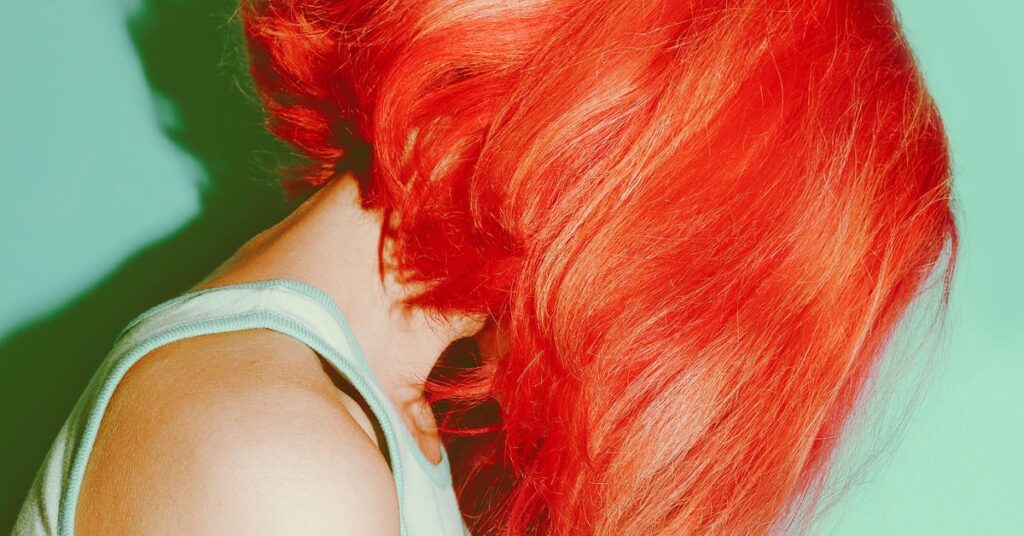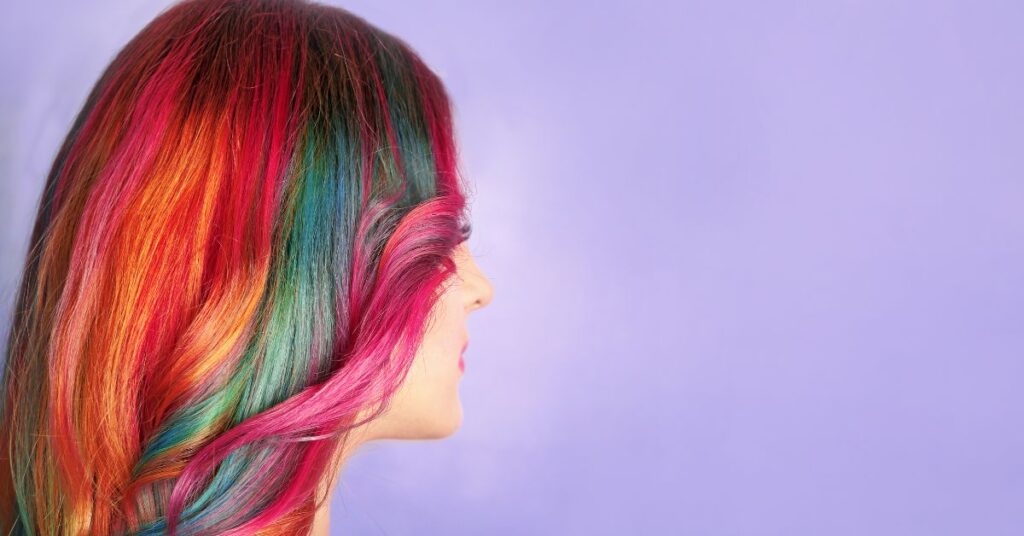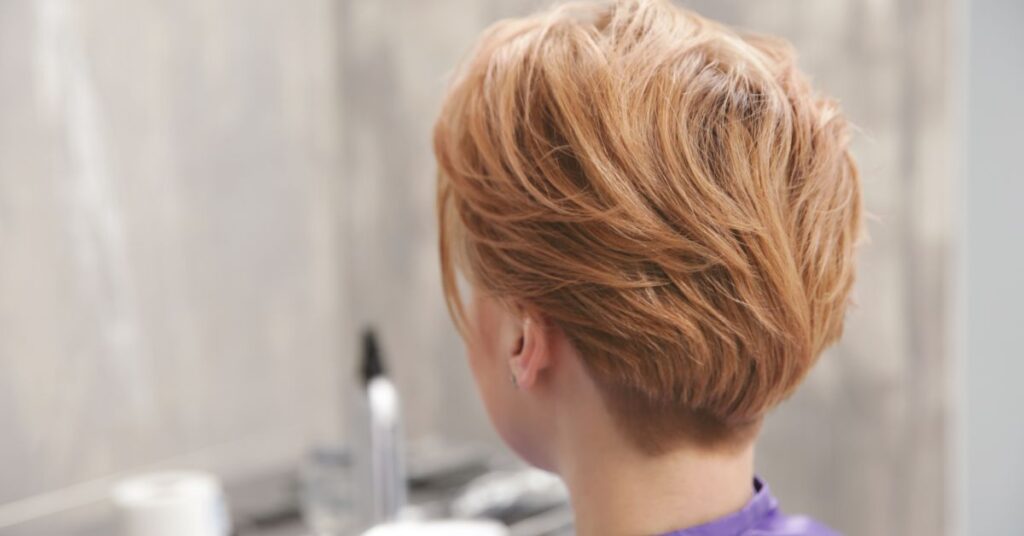
Introduce
Welcome to our guide on how to make your hair color last longer! Whether you’ve recently dyed your hair or you’re a seasoned color enthusiast, maintaining vibrant and lasting color can be a challenge. In this article, we’ll provide you with nine essential tips to help you preserve your hair color for as long as possible. From preparation and application to maintenance and touch-ups, we’ve got you covered. Let’s dive in and discover how to keep your hair looking fresh and vibrant between salon visits.
Choosing the Right Color and Formula
Selecting the right hair color and formula is crucial for ensuring long-lasting results. Here’s what you need to consider:
- Understanding Your Hair Type: Take into account your natural hair color, texture, and condition. Certain hair types may hold color better than others, and some colors may require more maintenance than others.
- Consulting with a Professional: If you’re unsure about which color or formula to choose, schedule a consultation with a professional colorist. They can assess your hair and recommend the best options based on your preferences and lifestyle.
- Choosing a Quality Product: Opt for high-quality hair color products from reputable brands. While they may be more expensive upfront, quality products often deliver better results and can help your color last longer.
- Considering Semi-Permanent vs. Permanent Color: Semi-permanent colors gradually fade with each wash, while permanent colors penetrate the hair shaft and last longer. Consider your desired level of commitment and maintenance when choosing between the two.
- Testing for Allergies and Sensitivities: Before applying any hair color, perform a patch test to check for allergic reactions or sensitivities. Apply a small amount of the product to a small area of your skin and wait 24-48 hours to ensure there are no adverse reactions.
- Matching Your Skin Tone: Choose a hair color that complements your skin tone for a flattering look. Cool-toned hair colors typically suit those with fair skin, while warm-toned colors complement warmer skin tones.
Preparing Your Hair Before Coloring
Properly preparing your hair before applying color is essential for achieving optimal results and ensuring longevity. Here are the steps to follow:
- Clarifying Your Hair: Remove any buildup of products, oils, and impurities from your hair by using a clarifying shampoo. This will help the color penetrate evenly and prevent dullness or uneven results.
- Deep Conditioning Treatment: Prior to coloring, treat your hair to a deep conditioning treatment to nourish and moisturize it. This will help protect your hair from damage during the coloring process and improve color retention.
- Trimming Split Ends: If your hair has split ends or damage, consider getting a trim before coloring. Trimming your hair will remove any damaged or weakened areas, ensuring that the color applies evenly and looks vibrant from root to tip.
- Avoiding Recent Chemical Treatments: If you’ve recently undergone chemical treatments such as perms or relaxers, wait at least two weeks before coloring your hair. Chemical treatments can weaken the hair and make it more susceptible to damage from coloring agents.
- Doing a Strand Test: Before applying color to your entire head, do a strand test to ensure that you’re happy with the color result and that your hair can tolerate the product. Choose a small section of hair, apply the color as directed, and assess the results before proceeding.
- Protecting Your Scalp: Apply a thin layer of petroleum jelly or a protective barrier cream along your hairline and on your ears to prevent staining from the hair color. This will make cleanup easier and help prevent irritation to your skin.
- Sectioning Your Hair: Divide your hair into manageable sections using clips or hair ties before applying the color. This will ensure thorough coverage and prevent any missed spots.

Applying the Color Correctly
Applying hair color correctly is crucial for achieving even coverage and long-lasting results. Follow these steps for successful application:
- Read and Follow the Instructions: Before starting the coloring process, carefully read the instructions provided with the hair color product. Follow the manufacturer’s guidelines for mixing the color, application techniques, and processing times.
- Wear Protective Gear: Put on gloves to protect your hands from staining and irritation. Consider wearing an old shirt or using a cape to protect your clothing from accidental spills or drips.
- Start with Clean, Dry Hair: Apply hair color to clean, dry hair that is free from styling products. Avoid washing your hair immediately before coloring, as the natural oils in your scalp help protect your hair and scalp during the coloring process.
- Use the Right Tools: Use a tint brush or applicator bottle to apply the color evenly to your hair. If using a brush, start from the roots and work your way down to the ends, ensuring thorough coverage.
- Apply Color Strategically: Focus on the roots first, especially if you’re touching up regrowth. Then, work the color through the lengths and ends of your hair, making sure to saturate each section evenly.
- Comb Through for Even Distribution: After applying the color, use a wide-tooth comb to distribute the color evenly throughout your hair. This will help ensure that every strand is coated with color for consistent results.
- Avoid Overlapping: Be careful not to overlap the color onto previously colored hair, as this can result in uneven color or damage. If necessary, apply color only to the regrowth and refresh the lengths and ends during the last few minutes of processing time.
- Follow Processing Time: Set a timer to track the processing time recommended by the manufacturer. Avoid leaving the color on for longer than instructed, as this can lead to over-processing and damage to your hair.
- Rinse Thoroughly: Once the processing time is up, rinse your hair thoroughly with lukewarm water until the water runs clear. Follow up with a color-safe shampoo and conditioner to lock in the color and nourish your hair.
Timing and Processing
Proper timing and processing are essential aspects of coloring your hair effectively and ensuring that the color lasts. Here’s how to manage the timing for optimal results:
- Follow the Recommended Processing Time: Different hair color products have varying processing times, so it’s crucial to adhere to the instructions provided by the manufacturer. Set a timer to ensure that you don’t exceed or undercut the recommended processing time.
- Consider Hair Texture and Porosity: Hair texture and porosity can affect how quickly your hair absorbs and retains color. Fine or porous hair may process more quickly, while coarse or resistant hair may require additional time. Keep this in mind and monitor your hair’s progress during processing.
- Check Color Development: Periodically check the color development during the processing time to ensure that the desired shade is being achieved. Use a towel or tissue to wipe away a small section of color and assess the color’s intensity. If necessary, allow the color to process for additional time.
- Monitor Heat Exposure: Heat can accelerate the color development process, so consider using a hair dryer on a low or cool setting to speed up processing, especially if you’re short on time. However, avoid applying excessive heat, as it can cause damage to your hair.
- Be Mindful of Over-Processing: Leaving hair color on for too long can lead to over-processing, resulting in dryness, breakage, and uneven color. If you notice your hair becoming too dark or feeling brittle during processing, rinse out the color immediately to prevent further damage.
- Adjust Processing Time for Gray Coverage: Gray hair often requires additional processing time to achieve full coverage and depth of color. Follow the manufacturer’s recommendations for gray coverage and consider extending the processing time if necessary.
- Understand the Role of Developer Strength: The strength of the developer used with the hair color can affect processing time and color intensity. Higher volume developers typically result in faster processing and lighter color, while lower volume developers offer more gradual color development.
- Consider Strand Testing: If you’re unsure about the ideal processing time for your hair, consider performing a strand test before applying color to your entire head. This will allow you to gauge how your hair responds to the color and adjust the processing time accordingly.
Proper Rinsing and Shampooing Techniques
Proper rinsing and shampooing techniques are essential for removing excess color and ensuring that your hair retains its vibrancy. Follow these steps for effective rinsing and shampooing:
- Use Lukewarm Water: Begin by rinsing your hair with lukewarm water. Avoid using hot water, as it can open the hair cuticle and cause color to fade more quickly. Cold water, on the other hand, may not effectively remove excess color.
- Thoroughly Rinse Until Water Runs Clear: Continue rinsing your hair until the water runs clear. This indicates that all excess color has been removed from your hair. Pay special attention to the roots and scalp, where color tends to accumulate.
- Apply Color-Safe Shampoo: Once your hair is thoroughly rinsed, apply a color-safe shampoo to cleanse your hair and scalp. Choose a gentle, sulfate-free formula specifically designed for color-treated hair to prevent premature fading.
- Gently Massage the Scalp: Use your fingertips to gently massage the shampoo into your scalp, focusing on the roots where oil and product buildup tend to accumulate. Avoid vigorously scrubbing your scalp, as this can cause color to fade more quickly.
- Work Shampoo Through the Lengths and Ends: After massaging the shampoo into your scalp, work it through the lengths and ends of your hair. Be gentle to avoid tangling or damaging your hair, especially if it’s been recently colored.
- Rinse Thoroughly: Rinse your hair again with lukewarm water until all traces of shampoo are removed. Ensure that your hair is completely clean and free from product residue, which can dull the color and weigh down your hair.
- Apply Conditioner From Mid-Lengths to Ends: After shampooing, apply a color-safe conditioner from mid-lengths to ends. Avoid applying conditioner to the roots, as this can weigh down your hair and make it appear greasy more quickly.
- Leave Conditioner on for the Recommended Time: Allow the conditioner to sit on your hair for the recommended amount of time, usually 1-2 minutes. This allows the conditioner to penetrate the hair shaft and provide hydration and nourishment.
- Rinse with Cool Water: Finish by rinsing your hair with cool water to seal the hair cuticle and lock in moisture. Cool water also helps to enhance shine and prevent color from fading prematurely.

Conclusion
In conclusion, maintaining vibrant and long-lasting hair color requires attention to detail and proper care at every step of the process. By choosing the right color and formula, preparing your hair effectively, applying the color correctly, and managing timing and processing, you can achieve beautiful results that endure. Additionally, employing proper rinsing and shampooing techniques ensures that your color remains vibrant and fades slowly over time. Remember to use high-quality products designed for color-treated hair and to follow a regular maintenance routine to keep your color looking fresh between salon visits. With these tips and techniques, you can enjoy stunning hair color that lasts and radiates confidence every day.read more
FAQs (Frequently Asked Questions)
1. How long does hair color typically last?
Hair color longevity varies depending on factors such as hair type, color formula, and maintenance routine. On average, permanent hair color can last between 4 to 8 weeks before requiring touch-ups.
2. Can I color my hair at home, or should I visit a salon?
Whether you choose to color your hair at home or visit a salon depends on your comfort level, desired outcome, and complexity of the color process. If you’re unsure, it’s best to consult with a professional colorist for personalized advice.
3. Will using sulfate-free shampoo really help preserve my hair color?
Yes, sulfate-free shampoos are gentler on color-treated hair and help prevent premature fading. They contain milder cleansing agents that won’t strip away the color molecules, allowing your hair color to last longer.
4. How often should I wash my hair after coloring?
It’s generally recommended to wait at least 24 to 48 hours after coloring before washing your hair to allow the color to fully set. Afterward, aim to wash your hair no more than 2 to 3 times per week to minimize color fading.
5. Can I swim in chlorinated pools or saltwater with freshly colored hair?
Chlorinated pools and saltwater can strip away hair color and cause it to fade more quickly. To protect your color, consider wearing a swim cap or applying a leave-in conditioner before swimming. Rinse your hair thoroughly with fresh water after swimming to remove any chlorine or salt residue.
6. How can I prevent my hair color from turning brassy or dull over time?
To prevent brassiness or dullness, use color-enhancing products specifically formulated for your hair color, such as purple shampoo for blonde or silver hair. Additionally, consider scheduling regular toning treatments with your colorist to maintain your desired shade.
7. Will heat styling tools damage my hair color?
Heat styling tools can potentially cause damage to your hair, including color-treated hair, if used excessively or at high temperatures. To minimize damage, use heat protectant products before styling and opt for lower heat settings when possible.
8. Is it safe to color my hair during pregnancy or while breastfeeding?
While there is limited research on the safety of hair coloring during pregnancy and breastfeeding, many experts consider it safe to color your hair using semi-permanent or demi-permanent dyes. However, it’s best to consult with your healthcare provider before undergoing any chemical treatments during this time.
9. Can I fix a hair color mishap at home, or should I seek professional help?
Minor color mishaps, such as slightly uneven color or unwanted tones, can often be corrected at home using color-correcting products or toning treatments. However, for more significant issues or if you’re unsure how to proceed, it’s advisable to seek professional assistance from a colorist or stylist.

